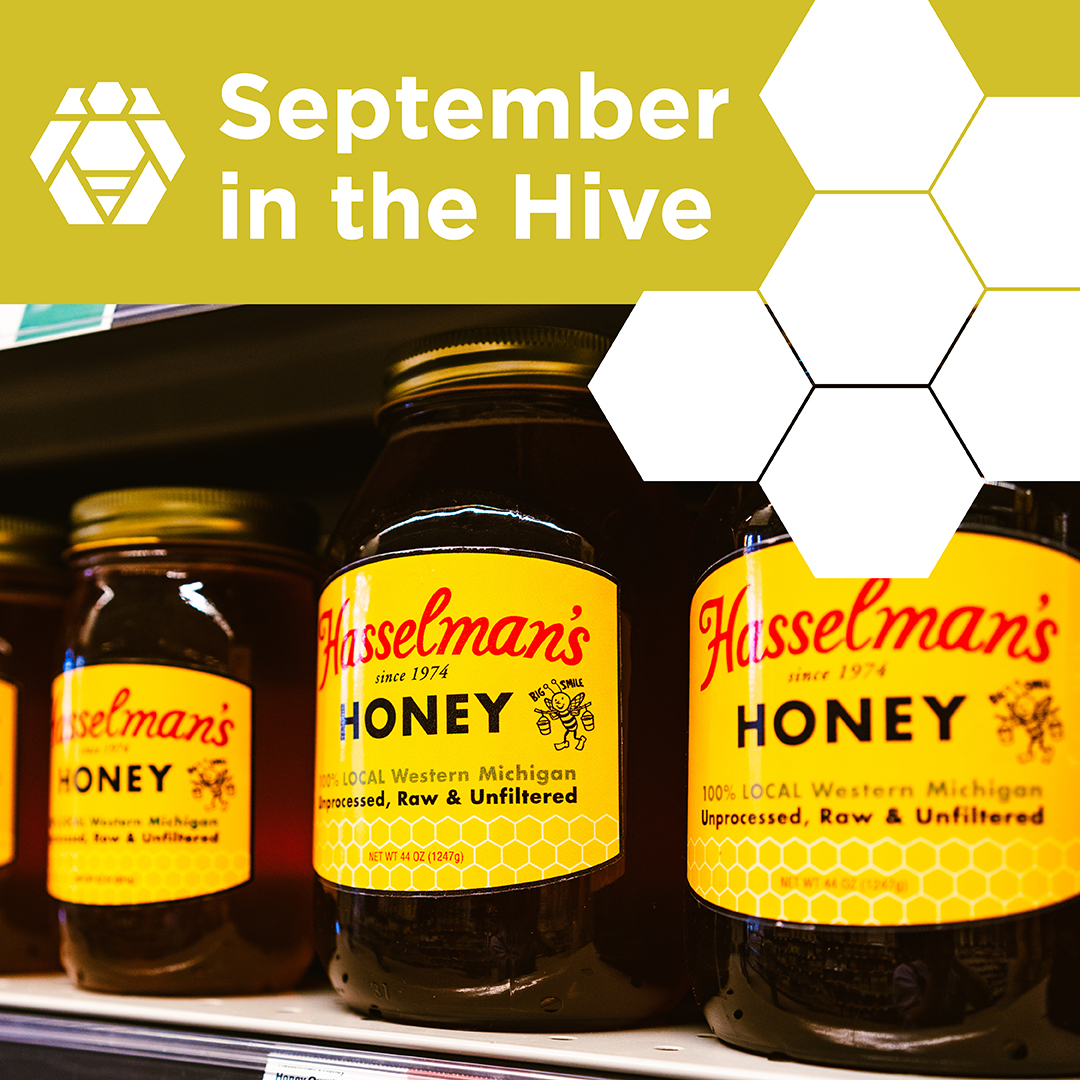
We hope our local beekeepers have successfully scooped up their bees’ last few drops of honey as last month was Honey Month. Enjoy September’s harvest as it’ll be awhile before we get any more of that gooey goodness. Cooler weather has arrived in Michigan, which means winter is on the horizon. For beekeepers, winterizing your hives is key to helping your bees survive West Michigan’s cold winter temperatures.
In October, you may have noticed the queen slowed down on her egg laying. As a hive moves through fall into winter the workers have been limiting the queen’s ability to lay eggs by backfilling the brood with winter stores. The hive’s drone population should have diminished by this time of year. A hive with drones in late-October may be an indication of a bigger problem. As the temperatures have cooled and resources have become scarce, you may see a handful of bees venture out of the hive looking for food on the occasionally warm autumn day.
Winterizing hives can take many forms. At a minimum, a winterized hive will have the feeder removed and the entrance reduced. A tip when using your entrance reducer, turn it so the smallest opening up for the bees to use. As bees die through the winter, having the entrance turned up gives an extra 1⁄4 inch of space for dead bees before the entrance is blocked. Other regular additions include adding on a mouse guard, a feeding shim, and a quilt box.
Also, some choose to cover or wrap their hives with foam board or black tar paper. Although winter does get cold, West Michigan winters generally do not get cold enough for long enough to require us to wrap our hives. Although not necessary, insulating the hive will reduce the bees’ work keeping the hive warm, but do not artificially heat the hive. Bees handle cold fairly well, but moisture causes bees difficulty. Wood chips or burlap in a quilt box will help wick condensation out of the hive.
Part of winterization is ensuring your bees have enough food. If your hive does not have 60 to 100 pounds of stored honey, October will be your last chance to feed liquid feed. All liquid feed should be pulled before the weather starts to freeze at night. If your bees still need feed, use fondant or sugar bricks. Do not feed pollen or pollen substitute for the remainder of fall. The reduction in pollen flow signals the bees to finish rearing winter bees as they prepare for
winter.
Varroa treatments should be done after pulling honey in early fall. But, if the mite loads in your hive are still elevated, you will want to treat them as soon as possible. Make sure to remove chemical varroa mite treatments according to label directions and that all treatments are removed before winterizing your hives.
Finally, consider when you will take your losses. Weak hives will struggle and likely parish over the winter. To keep those resources from being squandered, think about combining weak hives to those that could use a boost.

